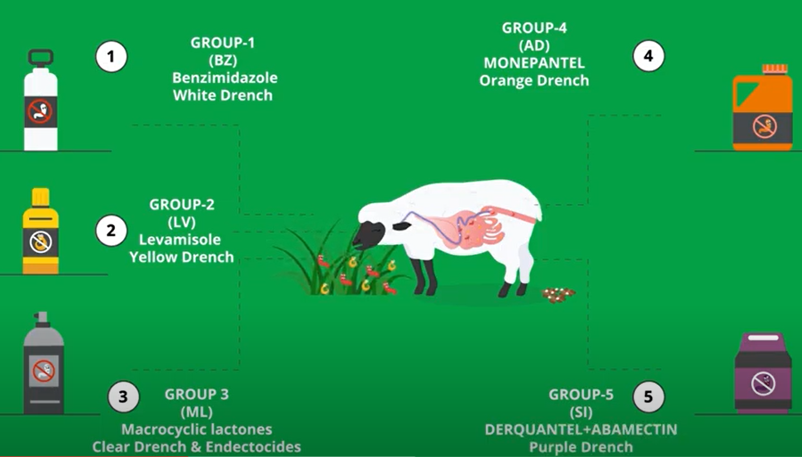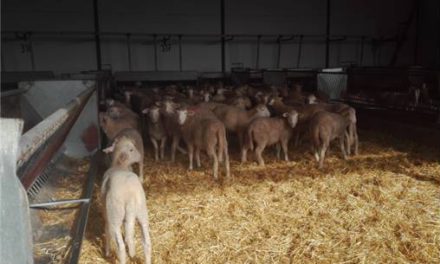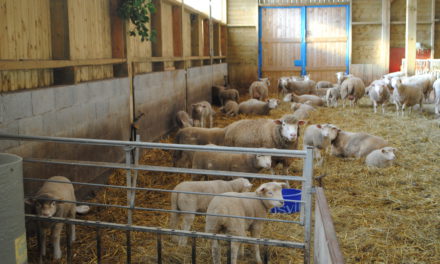This post is also available in:
![]()
![]()
![]()
![]()
![]()
![]()
Reducing Anthelmintic Resistance
Solution name: Reducing anthelmintic resistance
Aim: To increase the understanding of anthelmintic resistance – how it occurs and management strategies to prevent it
Description:
- Anthelmintic resistance is the ability of stomach worms to survive anthelmintic treatment.
- Anthelmintic resistance is becoming a growing problem in many countries.
- A study in Ireland showed resistance to benzimidazole on 88% of farms tested, resistance to levamisole on 39% of farms tested and resistance to ivermectin on 11% of farms tested.
- Faecal egg count reduction test (FECRT) is the most common mechanism to detect anthelmintic resistance.
- Sheep producers need to know what products are effective on their farm and be aware of management changes required to reduce anthelmintic resistance.
How to implement:
Four key areas identified to prevent anthelmintic resistance on farm:
- Do not dose adult ewes for stomach worms unless there is a demonstrated need.
- Only use white drenches (group 1-Benzimidazole) to treat Nematodirus in lambs.
- Faecal egg counting (dung sampling prior to treatment)
-
- identifies when worm burden is sufficient to justify treatment
- prevents overuse of drenches
- reduces the annual anthelmintic expenditure
- Purchased sheep should be:
-
- treated with an Amino Acetonitrile Derivative (group 4-AD) + either Levamisole (Group 2-LV) or Macrocyclic Lactone (Group 3-ML)
- housed after dosing for 48 hours
- introduce to contaminated pasture (i.e. ground grazed frequently by sheep)
Good management practices such as calibrating dosing guns, dosing animals accurately based on bodyweight, and grazing lambs on clean pasture, can help reduce anthelmintic resistance.
Topic: Health
Production: Dairy / Meat
Animal Category: Adult / Lamb / Replacement
Issue: Internal Parasites
Level of Solution: Knowledge, Practical
Country: Ireland

Expected benefits
Expected benefits: Reduce the risk of anthelmintic resistance occurring thus improving flock performance and profitability
Prerequisites and/or limits (knowledge, training, capabilities, cost, management, facilities, equipment, etc.)
- Good handling facilities for dosing sheep
- Knowledge on how to take faecal samples
- Area to quarantine any bought in animals
- Weighing scales to accurately dose
- Laboratory facilities to undertake FEC
Cost Benefit analysis
Reducing anthelmintic resistance on farm improves animal performance and reduces the amount and type of anthelmintics required. If anthelmintic resistance develops, anthelmintic costs will substantially increase due to need for group 4 and 5 wormers (orange/amino-acetonitrile derivatives and purple/spiroindoles).
Sustainability analysis
Reducing anthelmintic resistance improves feed and grazing efficiency as the animals have an improved growth rate and are slaughtered at a younger age. Greenhouse gas emissions per kg of carcass is reduced due to improved animal performance.
A reduction in anthelmintic resistance improves animal welfare, creates a better work environment and reduces physical labour, all of which has a positive effect on farmer image.







